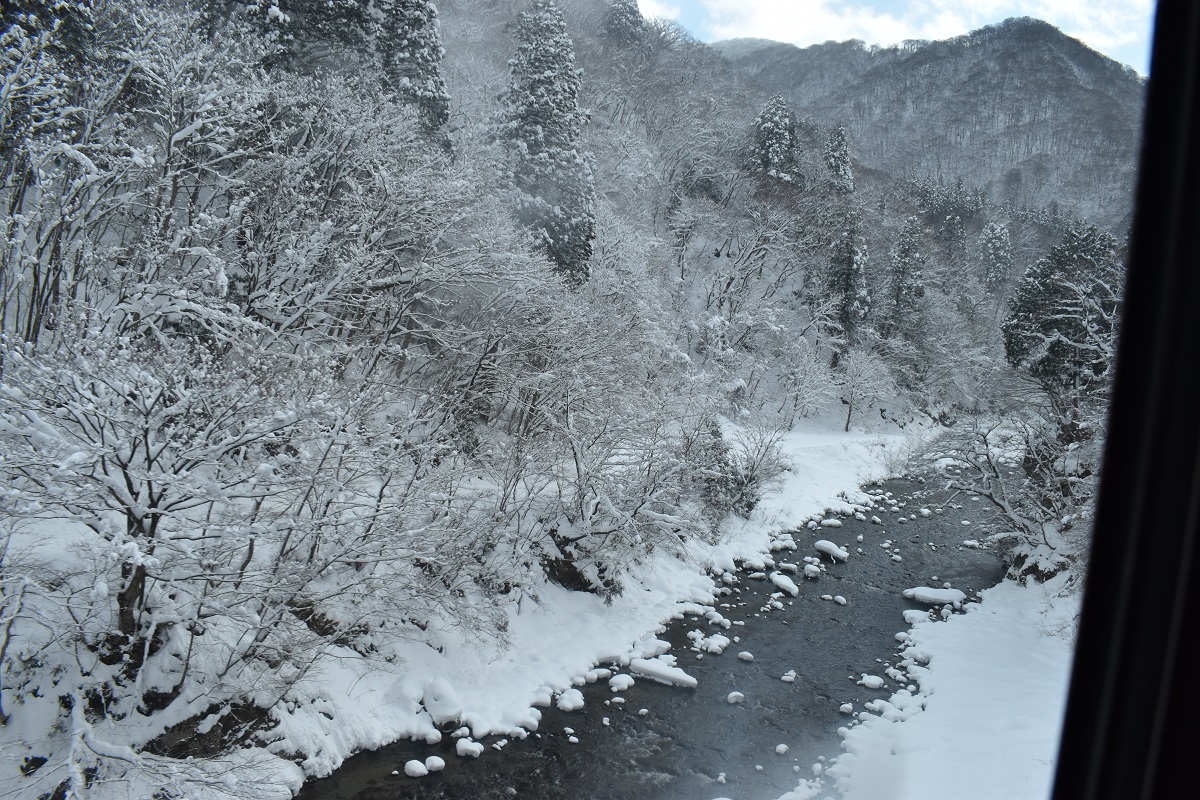I thought it was near Iwakuni Station, but I was shaken by a nice local bus and arrived when I was about to get worried. Original story is that, the castle town was small and divided by a river, so it seems that the feudal lord wanted to

build a large bridge so that the low-ranking samurai who lived on the other side of the castle would not have to use boats all the time. It is said that the arch bridge in the scenery of the West Lake in the Chinese literature ordered from Nagasaki was referred to. This bridge has a structure in which short girders are piled up from both sides and protrude little by little to form an arch. It is splendid because it is said that the 100% wooden bridge has not been washed away for nearly 300 years since its construction. I thought that the steep slope of the arch bridge was really slippery, but this time I learned for the first time that that part was the stairs.
In “Miyamoto Musashi” written by Eiji Yoshikawa, Tsubame-gaeshi, which is said to have been mastered by Kojiro Sasaki, Musashi’s opponent in a serious match with his life on the line, was created through practice on this bridge. Tsubame-gaeshi literally translates into English as cutting off a swiftly-circling swallow. However, it is charming that the bridge will be completed after the decisive battle between the two swordsmen. A bronze statue of Kojiro Sasaki stands by the bridge, and he is a splendid young warrior.


























 Crusing from Onomichi to Tomonoura
Crusing from Onomichi to Tomonoura









 The place where the Korean envoys stopped by still remains, and it is also the place where Japan’s first maritime casualty negotiations occurred between steamships on the late Edo period. Here is the site of a true story in which the Kishu Domain (almost Wakayama prefecture), which was under the control of the shogunate, was defeated by the Kaientai led by Ryoma Sakamoto, according to the World Public Law.
The place where the Korean envoys stopped by still remains, and it is also the place where Japan’s first maritime casualty negotiations occurred between steamships on the late Edo period. Here is the site of a true story in which the Kishu Domain (almost Wakayama prefecture), which was under the control of the shogunate, was defeated by the Kaientai led by Ryoma Sakamoto, according to the World Public Law.





























































